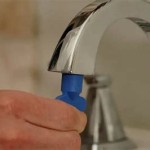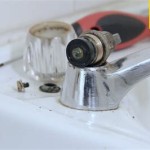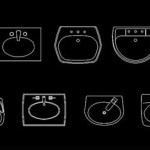How to Fix a Bathroom Faucet Handle That Won't Turn
A bathroom faucet handle that won't turn is a common problem that can quickly become frustrating. It can be caused by a variety of factors, including wear and tear, mineral buildup, or a loose or broken component. Fortunately, most of these issues can be addressed with simple repairs. This article will guide you through the troubleshooting and repair process to restore your faucet handle's functionality.
1. Identifying the Cause
Before attempting any repairs, it's crucial to understand the reason behind the handle's immobility. A thorough inspection will help pinpoint the issue and guide the repair strategy. Here's a breakdown of common causes and their corresponding symptoms:
a. Worn-out O-Rings or Washers: Over time, the O-rings and washers within the faucet handle's mechanism can wear down, leading to leaks or stiffness. This is often accompanied by a loose handle or a dripping faucet.
b. Mineral Buildup: Hard water deposits can accumulate in the faucet's internal components, obstructing the free movement of the handle. This is usually evident by a slow, restricted turning motion or a lack of smooth water flow.
c. Loose or Broken Components: The handle itself, the stem, or the cartridge may become loose or broken due to excessive force or wear and tear. Signs of this issue include a loose handle that spins freely without engaging the water valves, a clicking sound when turning the handle, or a sudden inability to turn the handle at all.
2. Troubleshooting and Repair
Once you've identified the cause of the stubborn faucet handle, you can proceed with the appropriate repair. Here's a step-by-step guide to fixing common problems:
a. Replacing Worn-out O-Rings and Washers
1. Turn off the water supply: Locate the shut-off valve for the faucet and turn it off completely.
2. Remove the handle: Depending on the faucet design, you may need to remove a screw, a cap, or use a special tool to detach the handle. Consult your faucet's manual for specific instructions.
3. Inspect the O-rings and washers: Look for signs of wear, cracks, or hardening. These components should be replaced if they show signs of deterioration.
4. Replace the O-rings and washers: Purchase compatible replacement parts from a hardware store or plumbing supplier. Carefully install the new O-rings and washers in their designated positions within the handle mechanism.
5. Reassemble the faucet: Once the new components are installed, reassemble the faucet handle and tighten all screws or parts securely.
6. Turn on the water supply: Gradually open the shut-off valve and check for leaks. If there are leaks, tighten the handle and check again.
b. Cleaning Mineral Buildup
1. Turn off the water supply: Locate the shut-off valve for the faucet and turn it off completely.
2. Remove the handle: Follow the instructions for your particular faucet model to detach the handle.
3. Clean the faucet components: Use a white vinegar solution or a commercial descaler to soak and clean the faucet's internal components, including the stem, cartridge, and aerator.
4. Reassemble the faucet: Once the components are clean and dry, reassemble the faucet handle and tighten all screws or parts securely.
5. Turn on the water supply: Gradually open the shut-off valve and check for leaks. If there are leaks, tighten the handle and check again.
c. Repairing Loose or Broken Components
1.
Replace the handle:
If the handle itself is loose or broken, you'll need to replace it. Purchase a compatible replacement handle from a hardware store or plumbing supplier. Follow the instructions provided with the new handle for installation.2.
Replace the stem:
If the stem is loose or broken, you will need to replace it. Consult your faucet's manual for specific instructions on removing and installing the stem.3.
Replace the cartridge:
If the cartridge is loose or broken, you will need to replace it. Consult your faucet's manual for specific instructions on removing and installing the cartridge.3. Preventive Maintenance
Regular maintenance can help prevent faucet handle issues from recurring. Here are some preventive measures:
a. Clean the faucet regularly: Wipe down the faucet with a damp cloth after each use. This removes soap scum and other residue. Use a soft-bristled brush to clean the aerator and remove any mineral buildup.
b. Use a water softener: If your water is hard, consider installing a water softener to reduce mineral buildup and extend the life of your faucet components.
c. Avoid excessive force: When turning the faucet handle, use gentle pressure. Avoid forcing the handle beyond its natural range of motion, as this can damage the components.

How To Change The Handle Rotation On A Faucet

My Kitchen Faucet Won T Turn Off

How To Fix A Stripped Faucet Handle In 10 Minutes Or Less Ricks Plumbing

Bathroom Handle Stiff Or Difficult To Operate

How To Tighten Faucet Handle Homeserve Usa

Fixing Faucets How Do I Fix Water That Keeps Running In A Tub Faucet

How To Fix A Tap Handle That Won T Turn On The Plumbette

How To Fix A Hard Turn Faucet Handle So Easy The Frugal Girls

Faucet Handle Hard To Turn

How To Fix A Leaking Bathtub Faucet Diy Family Handyman
Related Posts







